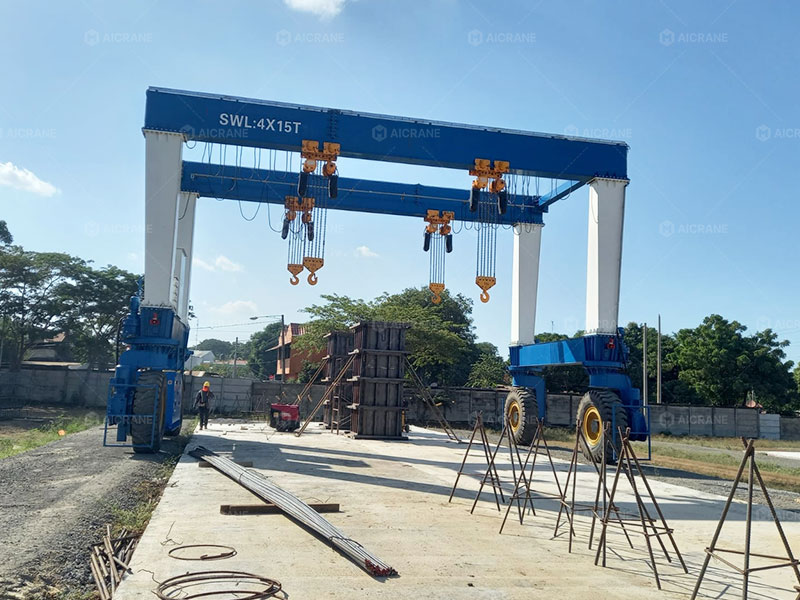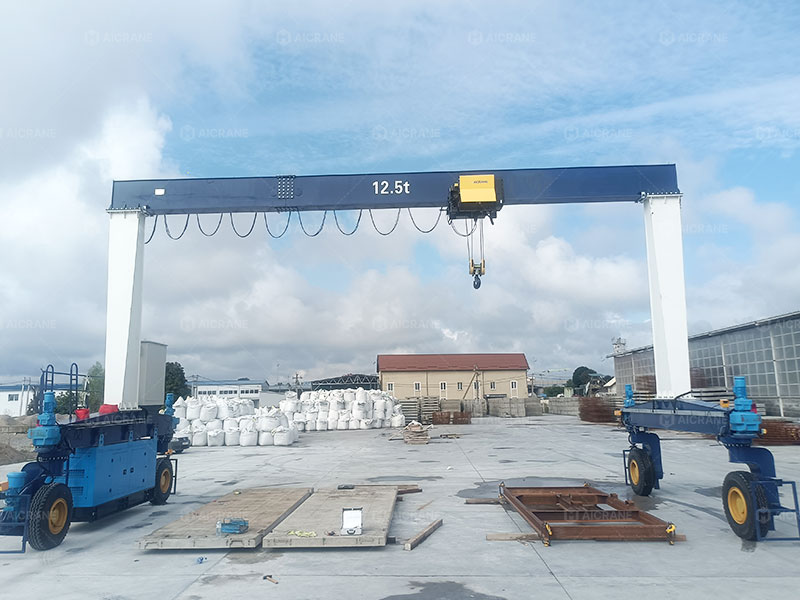In today’s fast-paced industrial and logistics environments, businesses are under constant pressure to improve efficiency, reduce downtime, and maximize return on investment. One piece of equipment that has gained widespread popularity across ports, container yards, warehouses, and industrial facilities is the rubber tyred gantry crane (RTG crane). Known for its mobility, adaptability, and ability to handle heavy loads, the RTG crane has become an indispensable solution for companies that require flexible lifting and material handling operations.
This article explores why buying a rubber tyre gantry crane can be a game-changing decision for your operations, highlighting its key advantages, applications, and long-term benefits.

1. Mobility and Flexibility
The most defining feature of an RTG crane is its mobility. Unlike rail mounted gantry cranes (RMG) that are fixed to tracks, an RTG runs on rubber tires, allowing it to move freely within a yard or facility. This mobility is invaluable in environments where layouts frequently change or where cargo needs to be handled across wide areas.
-
Flexible Yard Operations: Operators can easily reposition the crane to handle containers or heavy loads wherever they are located.
-
No Rail Installation Costs: Businesses save money on infrastructure since there is no need to lay down rails or fixed tracks.
-
Multi-Directional Steering: Many RTG cranes are equipped with advanced steering systems that allow crab steering, pivot turning, and diagonal movement, making it easier to navigate tight spaces.
This flexibility ensures companies can adapt quickly to changing operational needs without being tied to a fixed lifting system.
2. High Lifting Capacity
RTG cranes are engineered to handle significant loads, often in the range of 30 to 80 tons, and some models can go even higher depending on customization. This makes them ideal for container handling, steel yards, precast concrete plants, and other heavy-duty industries.
For instance:
-
Container Terminals: RTGs can efficiently stack and retrieve containers up to 6–8 rows wide and multiple layers high.
-
Industrial Yards: They can move oversized loads such as steel beams, wind turbine components, or precast structures.
The combination of high lifting capacity and mobility makes them one of the most versatile wheeled gantry cranes available on the market.
3. Cost-Effective Investment
While the upfront purchase price of an RTG crane can be significant, it delivers excellent long-term value. Companies benefit from:
-
Reduced Infrastructure Investment: No need for permanent rails or complex foundations.
-
Operational Efficiency: Faster movement of cargo and reduced downtime translate to higher productivity.
-
Lower Fuel or Energy Consumption: Modern RTGs often come with hybrid or electric power options, which can reduce operating costs and environmental impact.
The cost savings combined with productivity gains often mean that businesses achieve a faster return on investment compared to other lifting systems.

4. Versatility Across Industries
Rubber tyred gantry cranes are not limited to container ports. Their adaptability makes them useful in a variety of industries:
-
Logistics and Container Yards: For stacking and organizing containers.
-
Steel Mills and Fabrication Plants: For transporting raw materials and finished steel products.
-
Precast Concrete Plants: For moving large precast beams, slabs, and structural elements.
-
Shipyards: For handling boat components, engines, and heavy shipbuilding materials.
-
Renewable Energy Projects: For lifting and placing wind turbine blades, towers, and other bulky components.
This wide range of applications ensures that investing in an RTG crane offers businesses a versatile asset that can adapt to multiple operational needs.
5. Ease of Customization
One of the reasons RTG mobile gantry cranes remain so popular is their adaptability to customer requirements. They can be customized in terms of:
-
Capacity and Span: Depending on whether you need to lift 30 tons or 100 tons, RTGs can be tailored accordingly.
-
Power Source: Options include diesel-powered, hybrid, and fully electric RTGs. Electric RTGs are especially popular in ports and warehouses aiming to reduce emissions.
-
Automation and Control: Modern RTGs can be fitted with semi-automated or fully automated systems, including remote operation, anti-sway technology, and collision avoidance systems.
-
Tire Configurations: Multiple steering modes and wheel arrangements improve maneuverability depending on the working environment.
This level of customization ensures that businesses get a solution specifically designed for their workflow.
6. Improved Safety Features
RTG cranes today are designed with safety as a priority, which is essential when handling heavy loads in busy work environments. Some of the notable safety features include:
-
Anti-Sway Technology: Reduces the swinging of loads, ensuring safe lifting and precise placement.
-
Collision Avoidance Systems: Sensors and cameras help prevent accidents with people, vehicles, or other equipment.
-
Load Monitoring Systems: Prevents overloading and ensures operators are always aware of weight limits.
-
Ergonomic Cabins: Designed for operator comfort and better visibility.
These features not only protect workers and assets but also minimize costly downtime caused by accidents or damage.
7. Environmentally Friendly Options
Sustainability is becoming increasingly important in the logistics and industrial sectors. Many modern rubber tyred gantry cranes are available with electrification options that significantly reduce carbon emissions compared to traditional diesel-powered cranes.
-
Hybrid RTGs: Use a combination of diesel and battery power, lowering fuel consumption.
-
Fully Electric RTGs: Operate with zero on-site emissions and reduced noise pollution, ideal for urban or environmentally sensitive areas.
These eco-friendly designs help businesses meet regulatory requirements and corporate sustainability goals.
8. Scalability for Growing Operations
As businesses expand, their lifting requirements often grow as well. An RTG crane offers the scalability needed for long-term development. Since it can be easily relocated or reconfigured, companies can scale operations without making large additional investments in infrastructure.
For example, a logistics company that starts with a single RTG crane for container stacking can add more units over time as cargo volumes increase, all while maintaining operational efficiency.
9. Strong After-Sales Support
When purchasing from a reliable gantry crane manufacturer, RTG cranes are typically backed by comprehensive after-sales services, including installation guidance, operator training, regular maintenance, and readily available spare parts. This ensures the crane continues to operate at peak performance for decades, protecting your investment.
Conclusion
Buying a rubber tyred gantry crane is not just about acquiring a piece of lifting equipment – it’s about investing in flexibility, efficiency, and long-term growth. With their unmatched mobility, high lifting capacity, customization options, safety features, and environmentally friendly designs, RTGs provide businesses across ports, logistics, construction, and manufacturing with a versatile and future-proof solution.
For companies looking to streamline material handling while retaining operational flexibility, an RTG crane stands out as one of the most practical and cost-effective investments available today.